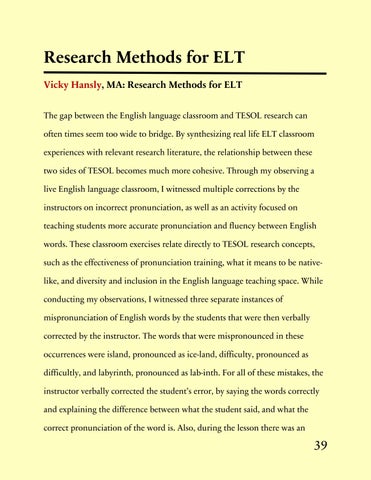Research Methods for ELT Vicky Hansly, MA: Research Methods for ELT The gap between the English language classroom and TESOL research can often times seem too wide to bridge. By synthesizing real life ELT classroom experiences with relevant research literature, the relationship between these two sides of TESOL becomes much more cohesive. Through my observing a live English language classroom, I witnessed multiple corrections by the instructors on incorrect pronunciation, as well as an activity focused on teaching students more accurate pronunciation and fluency between English words. These classroom exercises relate directly to TESOL research concepts, such as the effectiveness of pronunciation training, what it means to be nativelike, and diversity and inclusion in the English language teaching space. While conducting my observations, I witnessed three separate instances of mispronunciation of English words by the students that were then verbally corrected by the instructor. The words that were mispronounced in these occurrences were island, pronounced as ice-land, difficulty, pronounced as difficultly, and labyrinth, pronounced as lab-inth. For all of these mistakes, the instructor verbally corrected the student’s error, by saying the words correctly and explaining the difference between what the student said, and what the correct pronunciation of the word is. Also, during the lesson there was an
39

